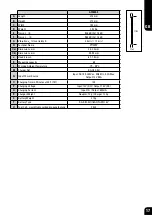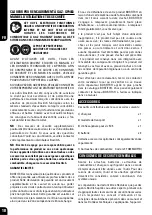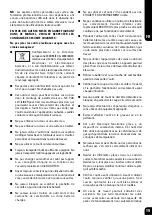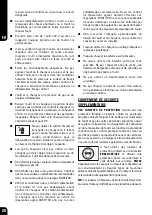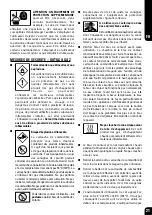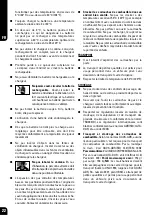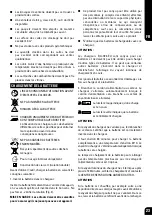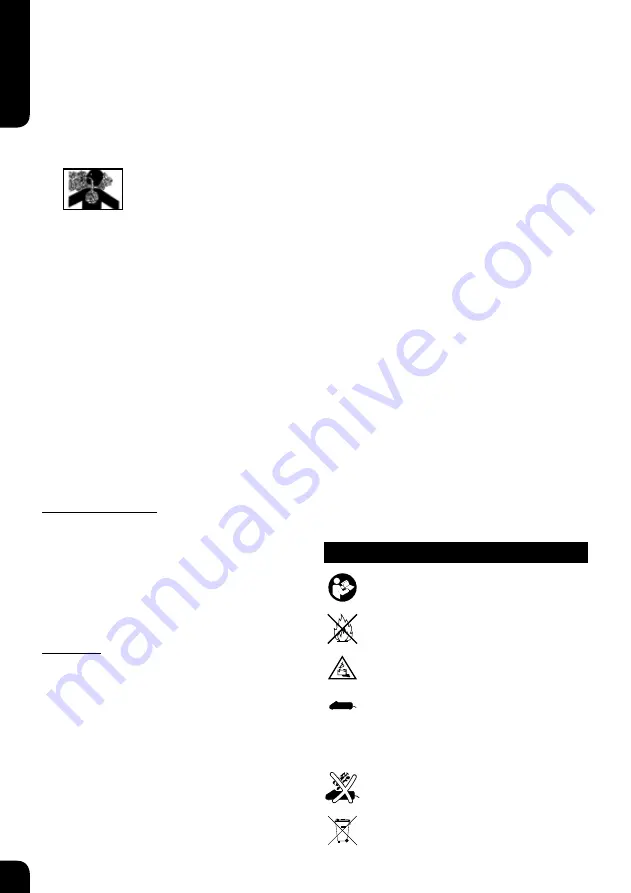
too short for practical use, recycle according to
your local legislation.
l
Do not insert objects into the air ventilation slots of
the charger. Inserting metal or flammable objects
into the charger’s air ventilation slots will result
in an electrical shock hazard or damage to the
charger.
l
Do not inhale its contents.
In case of
inhalation, the person affected
should be taken into the open air and
brought into a comfortable position.
l
Expanding gases cause low temperatures. Fluid
gases might cause injuries when coming into
contact with skin or eyes. In case of contact with
skin, wash the contact surface carefully with warm
water and soap and apply a skin cream when dry.
In case of contact with eyes, rinse the open eyes
under running water. Contact a doctor if necessary.
l
Store fuel cells in a well ventilated area.
Do not store above 50°C (120°F) (for example in
direct sunlight or in a vehicle). Do not expose to
an open flame and sparks. Do not puncture or open
the fuel cell. Do not refill, reclaim or recycle the
fuel cell. Dispose of according to local regulations
for aerosol products. Do not dispose of fuel cell
with other scrap for recycling. Keep out of reach
of children.
TRANSPORTATION
l
Shipment via mail is not allowed.
l
Transportation of small quantities for own use in a
private car is allowed without shipping papers and
emergency card.
l
Observe temperature limit of 50°C (120°F).
STORAGE
l
Do not store in passages, entry halls, near doors
and exits or in attics.
l
Ensure the tool, gas cell and battery are all stored
in accordance with local Fire Safety Regulations
l
Observe local regulations about storage, handling
and transportation of aerosol products and
according to TRG300(D). International regulations
are established according to ADR/RID; IATA-DGR;
IMDG-Code
l
Fuel Cell transportation & storage.
According to
GGVS-ADR, no special licence is required for the
transportation of fuel cells.
Road/Rail:
see GGVS-ADR/RID CI.2/ITEM 10B2
Seafreight:
see IMDG CI.9/P.9022/EmS No. 2-13
Air/IATA-DGR
: see CI.2/Risk Gr.3/Packinstr. 203
/ max weight per shipment 75kg / cargo 150 kg
Note:
Goods must be accompanied by transport
emergency card for road UN No. 1950 (Emergency
CI.2 GGVS/ADR, Rn.. No. 2201, Item IB02)
Transportation of small quantities for own use in a
private car is allowed without shipping papers and
emergency card.
l
Sales booths should not be close to exits.
l
A fire extinguisher of 6 kg, class A, B, or C must be
available.
l
Packages should be stacked up in a safe manner,
so that they don’t fall to the ground.
l
Store rooms must not take more than 20 m
2
of room
surface.
l
Do not store together with pyrotechnical goods.
l
The quantity stored in sales rooms should not
exceed daily sales.
l
Tools with an open flame or high temperature must
not be operated near fuel cells.
l
Fuel cells must not be displayed in shop windows.
CHARGING THE BATTERY
READ OPERATION INSTRUCTIONS
BEFORE USE.
DO NOT INCINERATE THE
BATTERY PACK
BATTERY HAZARD
BG-C02-EU
CHARGE COMPATIBLE BOSTITCH BATTERY
PACKS ONLY. Charging battery packs other
than the designated battery with this charger
may make them burst or lead to other
dangerous situations.
DO NOT CHARGE DAMAGED
BATTERY PACKS.
Recycle separately from other
household waste.
GB
8
Summary of Contents for GF9033-E
Page 89: ...l l l l l 40 C l l l l BOSTITCH l BOSTITCH BOSTITCH l l l l l l DC 89 686 EEC EEC EN166 GR 88...
Page 93: ...2 i 6a 6b ii 7 iii 8 iv 3 5 l l 1 2 3 l horseplay l l l l l l l GR 92...
Page 96: ...4 5 A B 14 1 15 2 16 3 4 5 6 7 Bostitch 1 GR 95...
Page 99: ...14 38 39 15 40 16 41 17 42 18 43 19 44 5 10 GR 98...
Page 234: ...233...
Page 235: ...234...


















